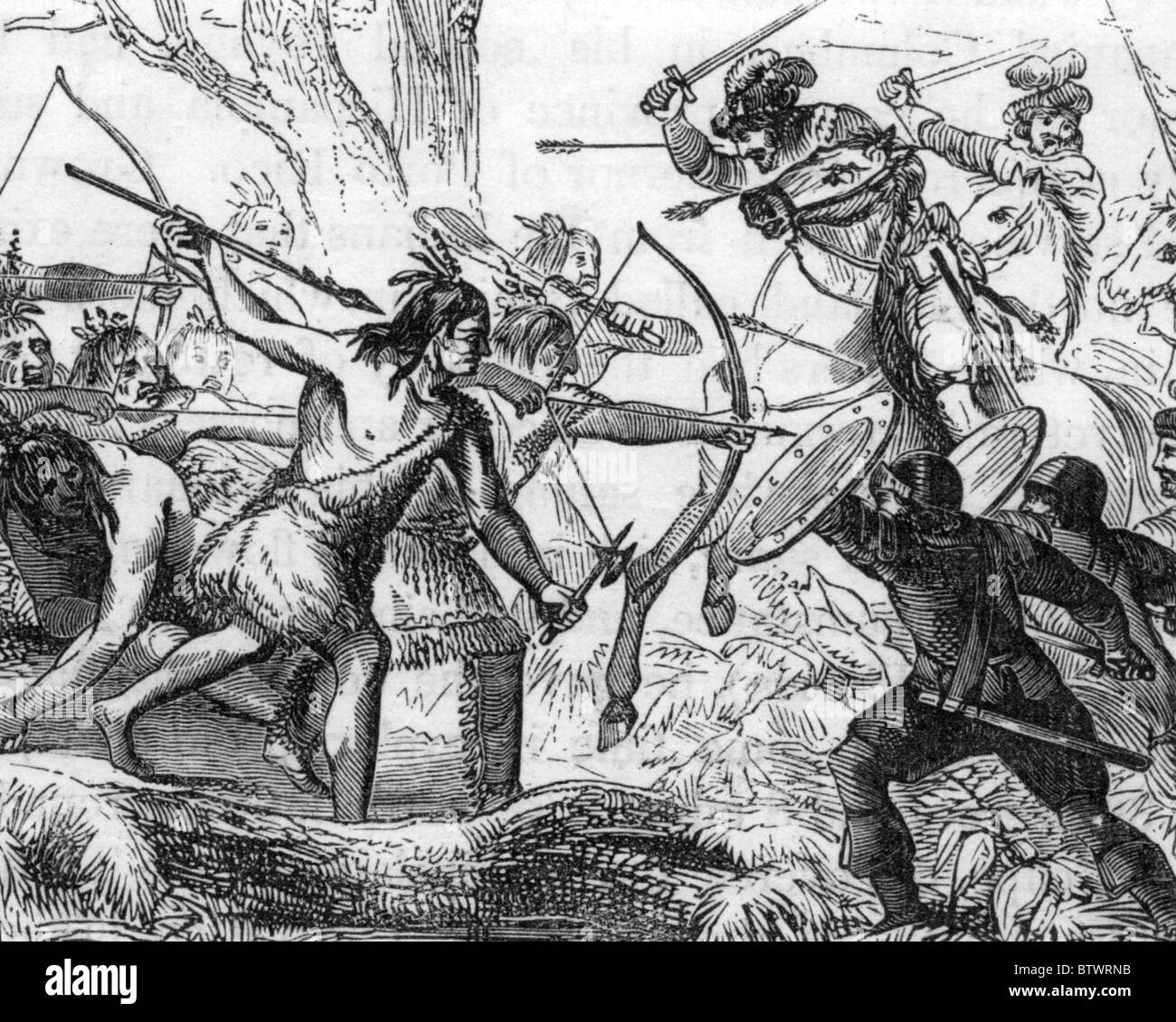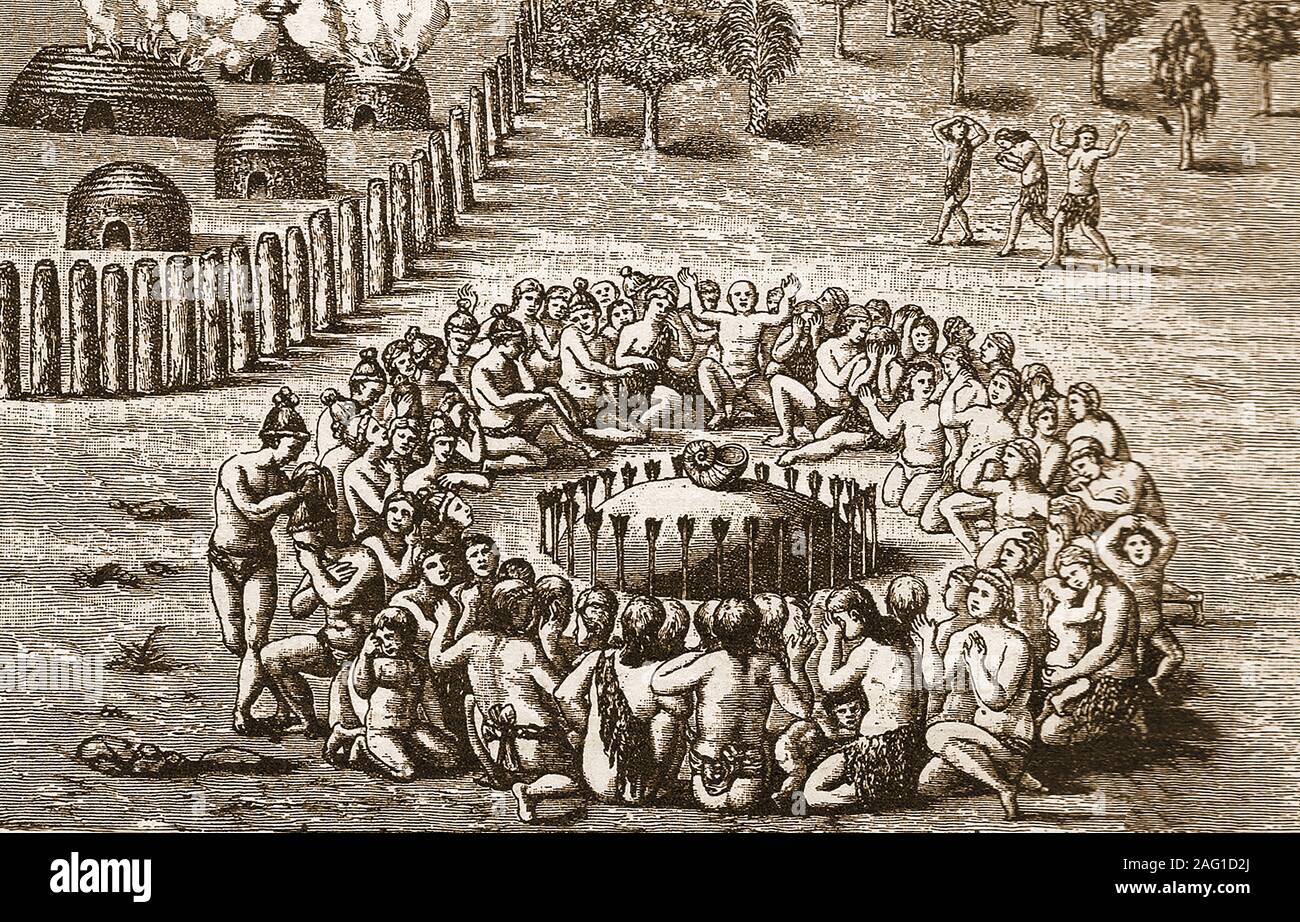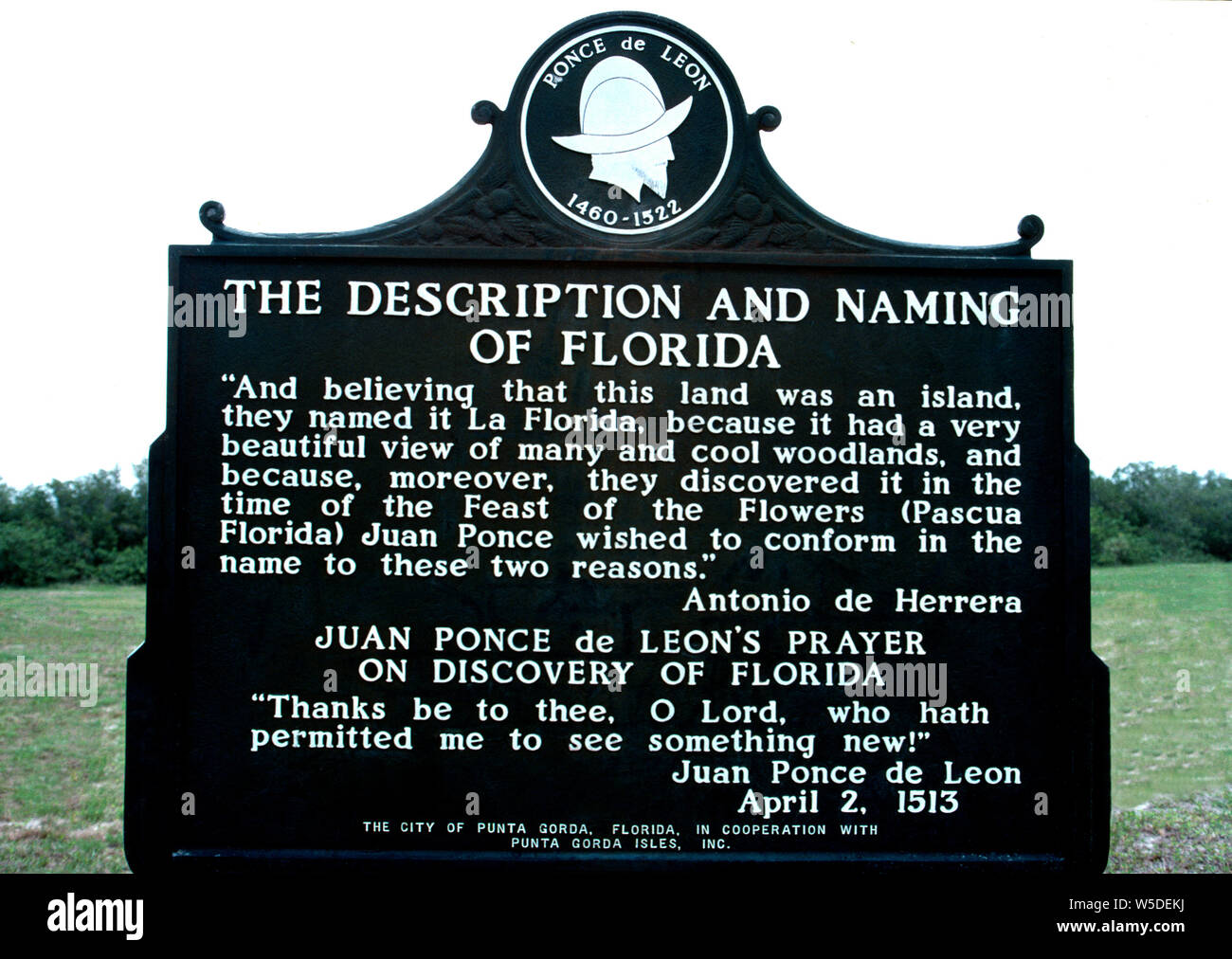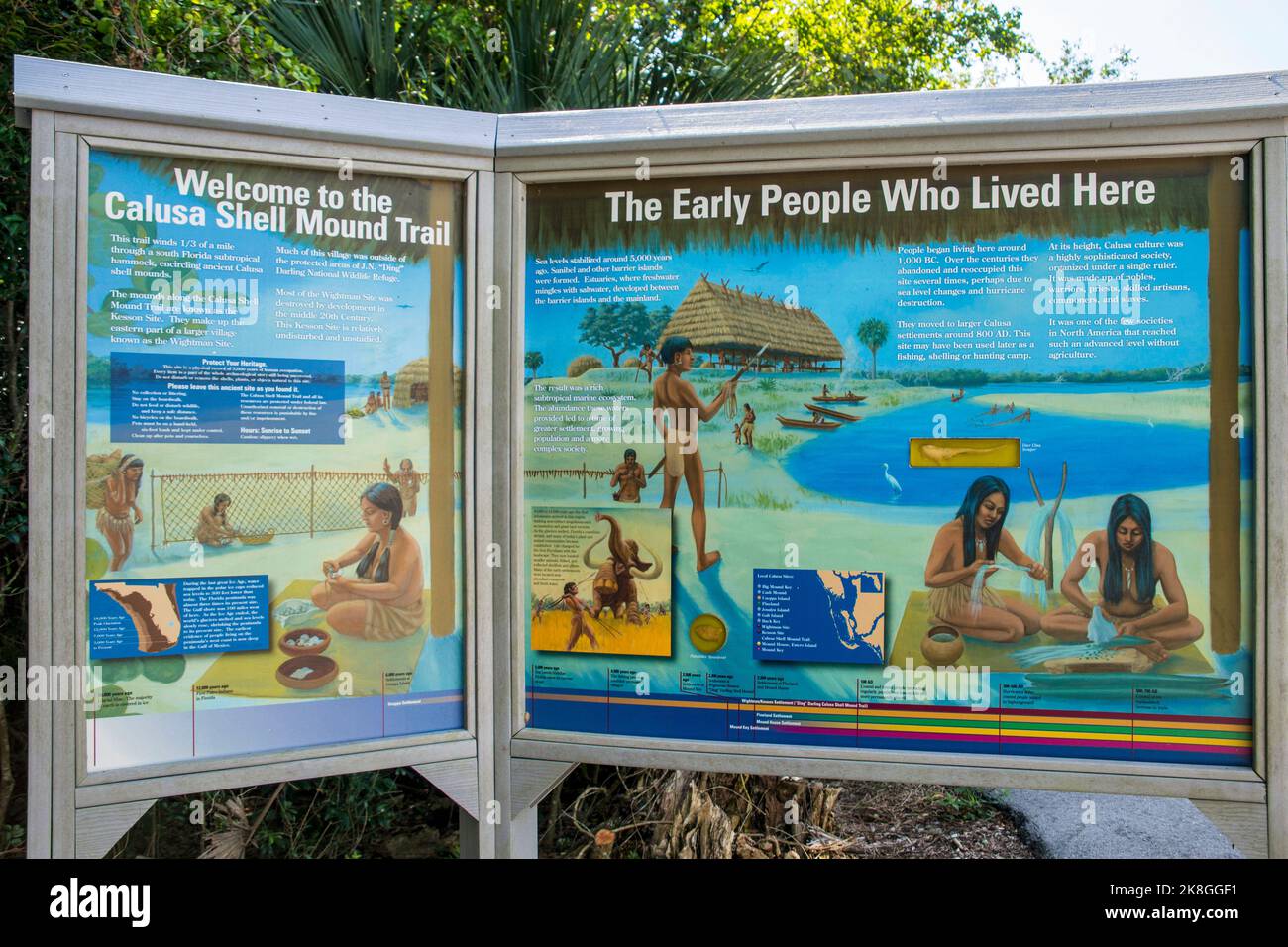Quick filters:
Calusa indians Stock Photos and Images
 CALUSA INDIANS on Florida's southwest coast attack Hernando de Soto's expedition in 1539 Stock Photohttps://www.alamy.com/image-license-details/?v=1https://www.alamy.com/stock-photo-calusa-indians-on-floridas-southwest-coast-attack-hernando-de-sotos-32529543.html
CALUSA INDIANS on Florida's southwest coast attack Hernando de Soto's expedition in 1539 Stock Photohttps://www.alamy.com/image-license-details/?v=1https://www.alamy.com/stock-photo-calusa-indians-on-floridas-southwest-coast-attack-hernando-de-sotos-32529543.htmlRMBTWRNB–CALUSA INDIANS on Florida's southwest coast attack Hernando de Soto's expedition in 1539
 Florida,Fort Ft. Myers Beach,The Mound House,midden,archaeological historical history site,preservation,Calusa Indians native heritage,after Hurricane Stock Photohttps://www.alamy.com/image-license-details/?v=1https://www.alamy.com/floridafort-ft-myers-beachthe-mound-housemiddenarchaeological-historical-history-sitepreservationcalusa-indians-native-heritageafter-hurricane-image210077219.html
Florida,Fort Ft. Myers Beach,The Mound House,midden,archaeological historical history site,preservation,Calusa Indians native heritage,after Hurricane Stock Photohttps://www.alamy.com/image-license-details/?v=1https://www.alamy.com/floridafort-ft-myers-beachthe-mound-housemiddenarchaeological-historical-history-sitepreservationcalusa-indians-native-heritageafter-hurricane-image210077219.htmlRMP5NRHR–Florida,Fort Ft. Myers Beach,The Mound House,midden,archaeological historical history site,preservation,Calusa Indians native heritage,after Hurricane
 A 19th century artist's impression of early North American Indians would perform ceremonies near their Giant Mounds., Stock Photohttps://www.alamy.com/image-license-details/?v=1https://www.alamy.com/a-19th-century-artists-impression-of-early-north-american-indians-would-perform-ceremonies-near-their-giant-mounds-image336863706.html
A 19th century artist's impression of early North American Indians would perform ceremonies near their Giant Mounds., Stock Photohttps://www.alamy.com/image-license-details/?v=1https://www.alamy.com/a-19th-century-artists-impression-of-early-north-american-indians-would-perform-ceremonies-near-their-giant-mounds-image336863706.htmlRM2AG1D2J–A 19th century artist's impression of early North American Indians would perform ceremonies near their Giant Mounds.,
 An historical plaque describes how the state of Florida, USA, got its name when Spanish explorer Juan Ponce de Leon landed his three sailing ships on the east coast of an unknown peninsula in 1513. Although he is called the discoverer of Florida, Native Americans had lived on the land for thousands of years. When Ponce de Leon's expedition of 200 men went ashore in La Florida, they did not realize it was part of the mainland of North America. During a later trip to southwest Florida in 1521 to establish a Spanish colony, Ponce de Leon was mortally wounded during an attack by Calusa Indians. Stock Photohttps://www.alamy.com/image-license-details/?v=1https://www.alamy.com/an-historical-plaque-describes-how-the-state-of-florida-usa-got-its-name-when-spanish-explorer-juan-ponce-de-leon-landed-his-three-sailing-ships-on-the-east-coast-of-an-unknown-peninsula-in-1513-although-he-is-called-the-discoverer-of-florida-native-americans-had-lived-on-the-land-for-thousands-of-years-when-ponce-de-leons-expedition-of-200-men-went-ashore-in-la-florida-they-did-not-realize-it-was-part-of-the-mainland-of-north-america-during-a-later-trip-to-southwest-florida-in-1521-to-establish-a-spanish-colony-ponce-de-leon-was-mortally-wounded-during-an-attack-by-calusa-indians-image261525702.html
An historical plaque describes how the state of Florida, USA, got its name when Spanish explorer Juan Ponce de Leon landed his three sailing ships on the east coast of an unknown peninsula in 1513. Although he is called the discoverer of Florida, Native Americans had lived on the land for thousands of years. When Ponce de Leon's expedition of 200 men went ashore in La Florida, they did not realize it was part of the mainland of North America. During a later trip to southwest Florida in 1521 to establish a Spanish colony, Ponce de Leon was mortally wounded during an attack by Calusa Indians. Stock Photohttps://www.alamy.com/image-license-details/?v=1https://www.alamy.com/an-historical-plaque-describes-how-the-state-of-florida-usa-got-its-name-when-spanish-explorer-juan-ponce-de-leon-landed-his-three-sailing-ships-on-the-east-coast-of-an-unknown-peninsula-in-1513-although-he-is-called-the-discoverer-of-florida-native-americans-had-lived-on-the-land-for-thousands-of-years-when-ponce-de-leons-expedition-of-200-men-went-ashore-in-la-florida-they-did-not-realize-it-was-part-of-the-mainland-of-north-america-during-a-later-trip-to-southwest-florida-in-1521-to-establish-a-spanish-colony-ponce-de-leon-was-mortally-wounded-during-an-attack-by-calusa-indians-image261525702.htmlRMW5DEKJ–An historical plaque describes how the state of Florida, USA, got its name when Spanish explorer Juan Ponce de Leon landed his three sailing ships on the east coast of an unknown peninsula in 1513. Although he is called the discoverer of Florida, Native Americans had lived on the land for thousands of years. When Ponce de Leon's expedition of 200 men went ashore in La Florida, they did not realize it was part of the mainland of North America. During a later trip to southwest Florida in 1521 to establish a Spanish colony, Ponce de Leon was mortally wounded during an attack by Calusa Indians.
 Display depicting the Calusa Indians of Southwest Florida (known as the shell people) on display in the Bailey-Mathews Shell Museum on Sanibel Island, Florida, USA, on August 24, 2012. The Calusa Indians who inhabited Southwest Florida in A.D. 500 until around the 1700s were tied to the sea and commonly used tools made from sea-shells. (Photo by Creative Touch Imaging Ltd./NurPhoto) Stock Photohttps://www.alamy.com/image-license-details/?v=1https://www.alamy.com/display-depicting-the-calusa-indians-of-southwest-florida-known-as-the-shell-people-on-display-in-the-bailey-mathews-shell-museum-on-sanibel-island-florida-usa-on-august-24-2012-the-calusa-indians-who-inhabited-southwest-florida-in-ad-500-until-around-the-1700s-were-tied-to-the-sea-and-commonly-used-tools-made-from-sea-shells-photo-by-creative-touch-imaging-ltdnurphoto-image489669723.html
Display depicting the Calusa Indians of Southwest Florida (known as the shell people) on display in the Bailey-Mathews Shell Museum on Sanibel Island, Florida, USA, on August 24, 2012. The Calusa Indians who inhabited Southwest Florida in A.D. 500 until around the 1700s were tied to the sea and commonly used tools made from sea-shells. (Photo by Creative Touch Imaging Ltd./NurPhoto) Stock Photohttps://www.alamy.com/image-license-details/?v=1https://www.alamy.com/display-depicting-the-calusa-indians-of-southwest-florida-known-as-the-shell-people-on-display-in-the-bailey-mathews-shell-museum-on-sanibel-island-florida-usa-on-august-24-2012-the-calusa-indians-who-inhabited-southwest-florida-in-ad-500-until-around-the-1700s-were-tied-to-the-sea-and-commonly-used-tools-made-from-sea-shells-photo-by-creative-touch-imaging-ltdnurphoto-image489669723.htmlRM2KCJAMB–Display depicting the Calusa Indians of Southwest Florida (known as the shell people) on display in the Bailey-Mathews Shell Museum on Sanibel Island, Florida, USA, on August 24, 2012. The Calusa Indians who inhabited Southwest Florida in A.D. 500 until around the 1700s were tied to the sea and commonly used tools made from sea-shells. (Photo by Creative Touch Imaging Ltd./NurPhoto)
 Information sign about the Calusa Shell Mound Trail at the Darling National Wildlife Refuge prior to Hurricane Ian on Sanibel Island in Florida. Stock Photohttps://www.alamy.com/image-license-details/?v=1https://www.alamy.com/information-sign-about-the-calusa-shell-mound-trail-at-the-darling-national-wildlife-refuge-prior-to-hurricane-ian-on-sanibel-island-in-florida-image487171749.html
Information sign about the Calusa Shell Mound Trail at the Darling National Wildlife Refuge prior to Hurricane Ian on Sanibel Island in Florida. Stock Photohttps://www.alamy.com/image-license-details/?v=1https://www.alamy.com/information-sign-about-the-calusa-shell-mound-trail-at-the-darling-national-wildlife-refuge-prior-to-hurricane-ian-on-sanibel-island-in-florida-image487171749.htmlRF2K8GGF1–Information sign about the Calusa Shell Mound Trail at the Darling National Wildlife Refuge prior to Hurricane Ian on Sanibel Island in Florida.
 Koreshans walking on Calusa-built mounds on Mound Key Stock Photohttps://www.alamy.com/image-license-details/?v=1https://www.alamy.com/koreshans-walking-on-calusa-built-mounds-on-mound-key-image64996871.html
Koreshans walking on Calusa-built mounds on Mound Key Stock Photohttps://www.alamy.com/image-license-details/?v=1https://www.alamy.com/koreshans-walking-on-calusa-built-mounds-on-mound-key-image64996871.htmlRMDNMT4R–Koreshans walking on Calusa-built mounds on Mound Key
![. Bulletin. Ethnology. Densmouk] SEMINOLE MUSIC No. 24. Corn Dance Song (n) 59 (Catalog No. 2185). 3* m 1 r Fg £S ^ â¢'* * -*.. j* J p p * ^ E^ â a g rr 'â¢^i>JJ»J*'JI^**"IJ J CALUSA CORN DANCE The Calusa Corn Dance song is very old, and the singer said it "came from the mountain men." On being questioned further, he said that the white people call those Indians the Calusa and that they spoke Spanish. Continuing, he said that long ago the Calusa and Seminole camped near one another and the people of each camp visited freely in the other, learning songs and joining in the d Stock Photo . Bulletin. Ethnology. Densmouk] SEMINOLE MUSIC No. 24. Corn Dance Song (n) 59 (Catalog No. 2185). 3* m 1 r Fg £S ^ â¢'* * -*.. j* J p p * ^ E^ â a g rr 'â¢^i>JJ»J*'JI^**"IJ J CALUSA CORN DANCE The Calusa Corn Dance song is very old, and the singer said it "came from the mountain men." On being questioned further, he said that the white people call those Indians the Calusa and that they spoke Spanish. Continuing, he said that long ago the Calusa and Seminole camped near one another and the people of each camp visited freely in the other, learning songs and joining in the d Stock Photo](https://c8.alamy.com/comp/RGY37P/bulletin-ethnology-densmouk-seminole-music-no-24-corn-dance-song-n-59-catalog-no-2185-3-m-1-r-fg-s-j-j-p-p-e-a-g-rr-igtjjjjiquotij-j-calusa-corn-dance-the-calusa-corn-dance-song-is-very-old-and-the-singer-said-it-quotcame-from-the-mountain-menquot-on-being-questioned-further-he-said-that-the-white-people-call-those-indians-the-calusa-and-that-they-spoke-spanish-continuing-he-said-that-long-ago-the-calusa-and-seminole-camped-near-one-another-and-the-people-of-each-camp-visited-freely-in-the-other-learning-songs-and-joining-in-the-d-RGY37P.jpg) . Bulletin. Ethnology. Densmouk] SEMINOLE MUSIC No. 24. Corn Dance Song (n) 59 (Catalog No. 2185). 3* m 1 r Fg £S ^ â¢'* * -*.. j* J p p * ^ E^ â a g rr 'â¢^i>JJ»J*'JI^**"IJ J CALUSA CORN DANCE The Calusa Corn Dance song is very old, and the singer said it "came from the mountain men." On being questioned further, he said that the white people call those Indians the Calusa and that they spoke Spanish. Continuing, he said that long ago the Calusa and Seminole camped near one another and the people of each camp visited freely in the other, learning songs and joining in the d Stock Photohttps://www.alamy.com/image-license-details/?v=1https://www.alamy.com/bulletin-ethnology-densmouk-seminole-music-no-24-corn-dance-song-n-59-catalog-no-2185-3-m-1-r-fg-s-j-j-p-p-e-a-g-rr-igtjjjjiquotij-j-calusa-corn-dance-the-calusa-corn-dance-song-is-very-old-and-the-singer-said-it-quotcame-from-the-mountain-menquot-on-being-questioned-further-he-said-that-the-white-people-call-those-indians-the-calusa-and-that-they-spoke-spanish-continuing-he-said-that-long-ago-the-calusa-and-seminole-camped-near-one-another-and-the-people-of-each-camp-visited-freely-in-the-other-learning-songs-and-joining-in-the-d-image234164554.html
. Bulletin. Ethnology. Densmouk] SEMINOLE MUSIC No. 24. Corn Dance Song (n) 59 (Catalog No. 2185). 3* m 1 r Fg £S ^ â¢'* * -*.. j* J p p * ^ E^ â a g rr 'â¢^i>JJ»J*'JI^**"IJ J CALUSA CORN DANCE The Calusa Corn Dance song is very old, and the singer said it "came from the mountain men." On being questioned further, he said that the white people call those Indians the Calusa and that they spoke Spanish. Continuing, he said that long ago the Calusa and Seminole camped near one another and the people of each camp visited freely in the other, learning songs and joining in the d Stock Photohttps://www.alamy.com/image-license-details/?v=1https://www.alamy.com/bulletin-ethnology-densmouk-seminole-music-no-24-corn-dance-song-n-59-catalog-no-2185-3-m-1-r-fg-s-j-j-p-p-e-a-g-rr-igtjjjjiquotij-j-calusa-corn-dance-the-calusa-corn-dance-song-is-very-old-and-the-singer-said-it-quotcame-from-the-mountain-menquot-on-being-questioned-further-he-said-that-the-white-people-call-those-indians-the-calusa-and-that-they-spoke-spanish-continuing-he-said-that-long-ago-the-calusa-and-seminole-camped-near-one-another-and-the-people-of-each-camp-visited-freely-in-the-other-learning-songs-and-joining-in-the-d-image234164554.htmlRMRGY37P–. Bulletin. Ethnology. Densmouk] SEMINOLE MUSIC No. 24. Corn Dance Song (n) 59 (Catalog No. 2185). 3* m 1 r Fg £S ^ â¢'* * -*.. j* J p p * ^ E^ â a g rr 'â¢^i>JJ»J*'JI^**"IJ J CALUSA CORN DANCE The Calusa Corn Dance song is very old, and the singer said it "came from the mountain men." On being questioned further, he said that the white people call those Indians the Calusa and that they spoke Spanish. Continuing, he said that long ago the Calusa and Seminole camped near one another and the people of each camp visited freely in the other, learning songs and joining in the d
 Florida,Fort Ft. Myers Beach,The Mound House,midden,archaeological historical site,preservation,Calusa Indians native heritage,FL170925097 Stock Photohttps://www.alamy.com/image-license-details/?v=1https://www.alamy.com/floridafort-ft-myers-beachthe-mound-housemiddenarchaeological-historical-sitepreservationcalusa-indians-native-heritagefl170925097-image210077192.html
Florida,Fort Ft. Myers Beach,The Mound House,midden,archaeological historical site,preservation,Calusa Indians native heritage,FL170925097 Stock Photohttps://www.alamy.com/image-license-details/?v=1https://www.alamy.com/floridafort-ft-myers-beachthe-mound-housemiddenarchaeological-historical-sitepreservationcalusa-indians-native-heritagefl170925097-image210077192.htmlRMP5NRGT–Florida,Fort Ft. Myers Beach,The Mound House,midden,archaeological historical site,preservation,Calusa Indians native heritage,FL170925097
 Display depicting the Calusa Indians of Southwest Florida (known as the shell people) on display in the Bailey-Mathews Shell Museum on Sanibel Island, Florida, USA, on August 24, 2012. The Calusa Indians who inhabited Southwest Florida in A.D. 500 until around the 1700s were tied to the sea and commonly used tools made from sea-shells. (Photo by Creative Touch Imaging Ltd./NurPhoto) Stock Photohttps://www.alamy.com/image-license-details/?v=1https://www.alamy.com/display-depicting-the-calusa-indians-of-southwest-florida-known-as-the-shell-people-on-display-in-the-bailey-mathews-shell-museum-on-sanibel-island-florida-usa-on-august-24-2012-the-calusa-indians-who-inhabited-southwest-florida-in-ad-500-until-around-the-1700s-were-tied-to-the-sea-and-commonly-used-tools-made-from-sea-shells-photo-by-creative-touch-imaging-ltdnurphoto-image489669730.html
Display depicting the Calusa Indians of Southwest Florida (known as the shell people) on display in the Bailey-Mathews Shell Museum on Sanibel Island, Florida, USA, on August 24, 2012. The Calusa Indians who inhabited Southwest Florida in A.D. 500 until around the 1700s were tied to the sea and commonly used tools made from sea-shells. (Photo by Creative Touch Imaging Ltd./NurPhoto) Stock Photohttps://www.alamy.com/image-license-details/?v=1https://www.alamy.com/display-depicting-the-calusa-indians-of-southwest-florida-known-as-the-shell-people-on-display-in-the-bailey-mathews-shell-museum-on-sanibel-island-florida-usa-on-august-24-2012-the-calusa-indians-who-inhabited-southwest-florida-in-ad-500-until-around-the-1700s-were-tied-to-the-sea-and-commonly-used-tools-made-from-sea-shells-photo-by-creative-touch-imaging-ltdnurphoto-image489669730.htmlRM2KCJAMJ–Display depicting the Calusa Indians of Southwest Florida (known as the shell people) on display in the Bailey-Mathews Shell Museum on Sanibel Island, Florida, USA, on August 24, 2012. The Calusa Indians who inhabited Southwest Florida in A.D. 500 until around the 1700s were tied to the sea and commonly used tools made from sea-shells. (Photo by Creative Touch Imaging Ltd./NurPhoto)
 Heritage Protection sign on the Calusa Shell Mound Trail at the Darling National Wildlife Refuge prior to Hurricane Ian on Sanibel Island in Florida. Stock Photohttps://www.alamy.com/image-license-details/?v=1https://www.alamy.com/heritage-protection-sign-on-the-calusa-shell-mound-trail-at-the-darling-national-wildlife-refuge-prior-to-hurricane-ian-on-sanibel-island-in-florida-image487171688.html
Heritage Protection sign on the Calusa Shell Mound Trail at the Darling National Wildlife Refuge prior to Hurricane Ian on Sanibel Island in Florida. Stock Photohttps://www.alamy.com/image-license-details/?v=1https://www.alamy.com/heritage-protection-sign-on-the-calusa-shell-mound-trail-at-the-darling-national-wildlife-refuge-prior-to-hurricane-ian-on-sanibel-island-in-florida-image487171688.htmlRF2K8GGCT–Heritage Protection sign on the Calusa Shell Mound Trail at the Darling National Wildlife Refuge prior to Hurricane Ian on Sanibel Island in Florida.
 Florida,Fort Ft. Myers Beach,Estero Bay water,The Mound House,midden,archaeological historical history site,preservation,Calusa Indians native heritag Stock Photohttps://www.alamy.com/image-license-details/?v=1https://www.alamy.com/floridafort-ft-myers-beachestero-bay-waterthe-mound-housemiddenarchaeological-historical-history-sitepreservationcalusa-indians-native-heritag-image210077253.html
Florida,Fort Ft. Myers Beach,Estero Bay water,The Mound House,midden,archaeological historical history site,preservation,Calusa Indians native heritag Stock Photohttps://www.alamy.com/image-license-details/?v=1https://www.alamy.com/floridafort-ft-myers-beachestero-bay-waterthe-mound-housemiddenarchaeological-historical-history-sitepreservationcalusa-indians-native-heritag-image210077253.htmlRMP5NRK1–Florida,Fort Ft. Myers Beach,Estero Bay water,The Mound House,midden,archaeological historical history site,preservation,Calusa Indians native heritag
 Display depicting the Calusa Indians of Southwest Florida (known as the shell people) on display in the Bailey-Mathews Shell Museum on Sanibel Island, Florida, USA, on August 24, 2012. The Calusa Indians who inhabited Southwest Florida in A.D. 500 until around the 1700s were tied to the sea and commonly used tools made from sea-shells. (Photo by Creative Touch Imaging Ltd./NurPhoto) Stock Photohttps://www.alamy.com/image-license-details/?v=1https://www.alamy.com/display-depicting-the-calusa-indians-of-southwest-florida-known-as-the-shell-people-on-display-in-the-bailey-mathews-shell-museum-on-sanibel-island-florida-usa-on-august-24-2012-the-calusa-indians-who-inhabited-southwest-florida-in-ad-500-until-around-the-1700s-were-tied-to-the-sea-and-commonly-used-tools-made-from-sea-shells-photo-by-creative-touch-imaging-ltdnurphoto-image489669726.html
Display depicting the Calusa Indians of Southwest Florida (known as the shell people) on display in the Bailey-Mathews Shell Museum on Sanibel Island, Florida, USA, on August 24, 2012. The Calusa Indians who inhabited Southwest Florida in A.D. 500 until around the 1700s were tied to the sea and commonly used tools made from sea-shells. (Photo by Creative Touch Imaging Ltd./NurPhoto) Stock Photohttps://www.alamy.com/image-license-details/?v=1https://www.alamy.com/display-depicting-the-calusa-indians-of-southwest-florida-known-as-the-shell-people-on-display-in-the-bailey-mathews-shell-museum-on-sanibel-island-florida-usa-on-august-24-2012-the-calusa-indians-who-inhabited-southwest-florida-in-ad-500-until-around-the-1700s-were-tied-to-the-sea-and-commonly-used-tools-made-from-sea-shells-photo-by-creative-touch-imaging-ltdnurphoto-image489669726.htmlRM2KCJAME–Display depicting the Calusa Indians of Southwest Florida (known as the shell people) on display in the Bailey-Mathews Shell Museum on Sanibel Island, Florida, USA, on August 24, 2012. The Calusa Indians who inhabited Southwest Florida in A.D. 500 until around the 1700s were tied to the sea and commonly used tools made from sea-shells. (Photo by Creative Touch Imaging Ltd./NurPhoto)
 The Calusa Shell Mound Trail at the Darling National Wildlife Refuge prior to Hurricane Ian on Sanibel Island in Florida. Stock Photohttps://www.alamy.com/image-license-details/?v=1https://www.alamy.com/the-calusa-shell-mound-trail-at-the-darling-national-wildlife-refuge-prior-to-hurricane-ian-on-sanibel-island-in-florida-image487171785.html
The Calusa Shell Mound Trail at the Darling National Wildlife Refuge prior to Hurricane Ian on Sanibel Island in Florida. Stock Photohttps://www.alamy.com/image-license-details/?v=1https://www.alamy.com/the-calusa-shell-mound-trail-at-the-darling-national-wildlife-refuge-prior-to-hurricane-ian-on-sanibel-island-in-florida-image487171785.htmlRF2K8GGG9–The Calusa Shell Mound Trail at the Darling National Wildlife Refuge prior to Hurricane Ian on Sanibel Island in Florida.
 Florida,Fort Ft. Myers Beach,The Mound House,midden,archaeological historical history site,preservation,Calusa Indians native heritage,visitors travel Stock Photohttps://www.alamy.com/image-license-details/?v=1https://www.alamy.com/floridafort-ft-myers-beachthe-mound-housemiddenarchaeological-historical-history-sitepreservationcalusa-indians-native-heritagevisitors-travel-image210077241.html
Florida,Fort Ft. Myers Beach,The Mound House,midden,archaeological historical history site,preservation,Calusa Indians native heritage,visitors travel Stock Photohttps://www.alamy.com/image-license-details/?v=1https://www.alamy.com/floridafort-ft-myers-beachthe-mound-housemiddenarchaeological-historical-history-sitepreservationcalusa-indians-native-heritagevisitors-travel-image210077241.htmlRMP5NRJH–Florida,Fort Ft. Myers Beach,The Mound House,midden,archaeological historical history site,preservation,Calusa Indians native heritage,visitors travel
 Display depicting the Calusa Indians of Southwest Florida (known as the shell people) on display in the Bailey-Mathews Shell Museum on Sanibel Island, Florida, USA, on August 24, 2012. The Calusa Indians who inhabited Southwest Florida in A.D. 500 until around the 1700s were tied to the sea and commonly used tools made from sea-shells. (Photo by Creative Touch Imaging Ltd./NurPhoto) Stock Photohttps://www.alamy.com/image-license-details/?v=1https://www.alamy.com/display-depicting-the-calusa-indians-of-southwest-florida-known-as-the-shell-people-on-display-in-the-bailey-mathews-shell-museum-on-sanibel-island-florida-usa-on-august-24-2012-the-calusa-indians-who-inhabited-southwest-florida-in-ad-500-until-around-the-1700s-were-tied-to-the-sea-and-commonly-used-tools-made-from-sea-shells-photo-by-creative-touch-imaging-ltdnurphoto-image489669736.html
Display depicting the Calusa Indians of Southwest Florida (known as the shell people) on display in the Bailey-Mathews Shell Museum on Sanibel Island, Florida, USA, on August 24, 2012. The Calusa Indians who inhabited Southwest Florida in A.D. 500 until around the 1700s were tied to the sea and commonly used tools made from sea-shells. (Photo by Creative Touch Imaging Ltd./NurPhoto) Stock Photohttps://www.alamy.com/image-license-details/?v=1https://www.alamy.com/display-depicting-the-calusa-indians-of-southwest-florida-known-as-the-shell-people-on-display-in-the-bailey-mathews-shell-museum-on-sanibel-island-florida-usa-on-august-24-2012-the-calusa-indians-who-inhabited-southwest-florida-in-ad-500-until-around-the-1700s-were-tied-to-the-sea-and-commonly-used-tools-made-from-sea-shells-photo-by-creative-touch-imaging-ltdnurphoto-image489669736.htmlRM2KCJAMT–Display depicting the Calusa Indians of Southwest Florida (known as the shell people) on display in the Bailey-Mathews Shell Museum on Sanibel Island, Florida, USA, on August 24, 2012. The Calusa Indians who inhabited Southwest Florida in A.D. 500 until around the 1700s were tied to the sea and commonly used tools made from sea-shells. (Photo by Creative Touch Imaging Ltd./NurPhoto)
 Display depicting the Calusa Indians of Southwest Florida (known as the shell people) on display in the Bailey-Mathews Shell Museum on Sanibel Island, Florida, USA, on August 24, 2012. The Calusa Indians who inhabited Southwest Florida in A.D. 500 until around the 1700s were tied to the sea and commonly used tools made from sea-shells. (Photo by Creative Touch Imaging Ltd./NurPhoto) Stock Photohttps://www.alamy.com/image-license-details/?v=1https://www.alamy.com/display-depicting-the-calusa-indians-of-southwest-florida-known-as-the-shell-people-on-display-in-the-bailey-mathews-shell-museum-on-sanibel-island-florida-usa-on-august-24-2012-the-calusa-indians-who-inhabited-southwest-florida-in-ad-500-until-around-the-1700s-were-tied-to-the-sea-and-commonly-used-tools-made-from-sea-shells-photo-by-creative-touch-imaging-ltdnurphoto-image489669728.html
Display depicting the Calusa Indians of Southwest Florida (known as the shell people) on display in the Bailey-Mathews Shell Museum on Sanibel Island, Florida, USA, on August 24, 2012. The Calusa Indians who inhabited Southwest Florida in A.D. 500 until around the 1700s were tied to the sea and commonly used tools made from sea-shells. (Photo by Creative Touch Imaging Ltd./NurPhoto) Stock Photohttps://www.alamy.com/image-license-details/?v=1https://www.alamy.com/display-depicting-the-calusa-indians-of-southwest-florida-known-as-the-shell-people-on-display-in-the-bailey-mathews-shell-museum-on-sanibel-island-florida-usa-on-august-24-2012-the-calusa-indians-who-inhabited-southwest-florida-in-ad-500-until-around-the-1700s-were-tied-to-the-sea-and-commonly-used-tools-made-from-sea-shells-photo-by-creative-touch-imaging-ltdnurphoto-image489669728.htmlRM2KCJAMG–Display depicting the Calusa Indians of Southwest Florida (known as the shell people) on display in the Bailey-Mathews Shell Museum on Sanibel Island, Florida, USA, on August 24, 2012. The Calusa Indians who inhabited Southwest Florida in A.D. 500 until around the 1700s were tied to the sea and commonly used tools made from sea-shells. (Photo by Creative Touch Imaging Ltd./NurPhoto)